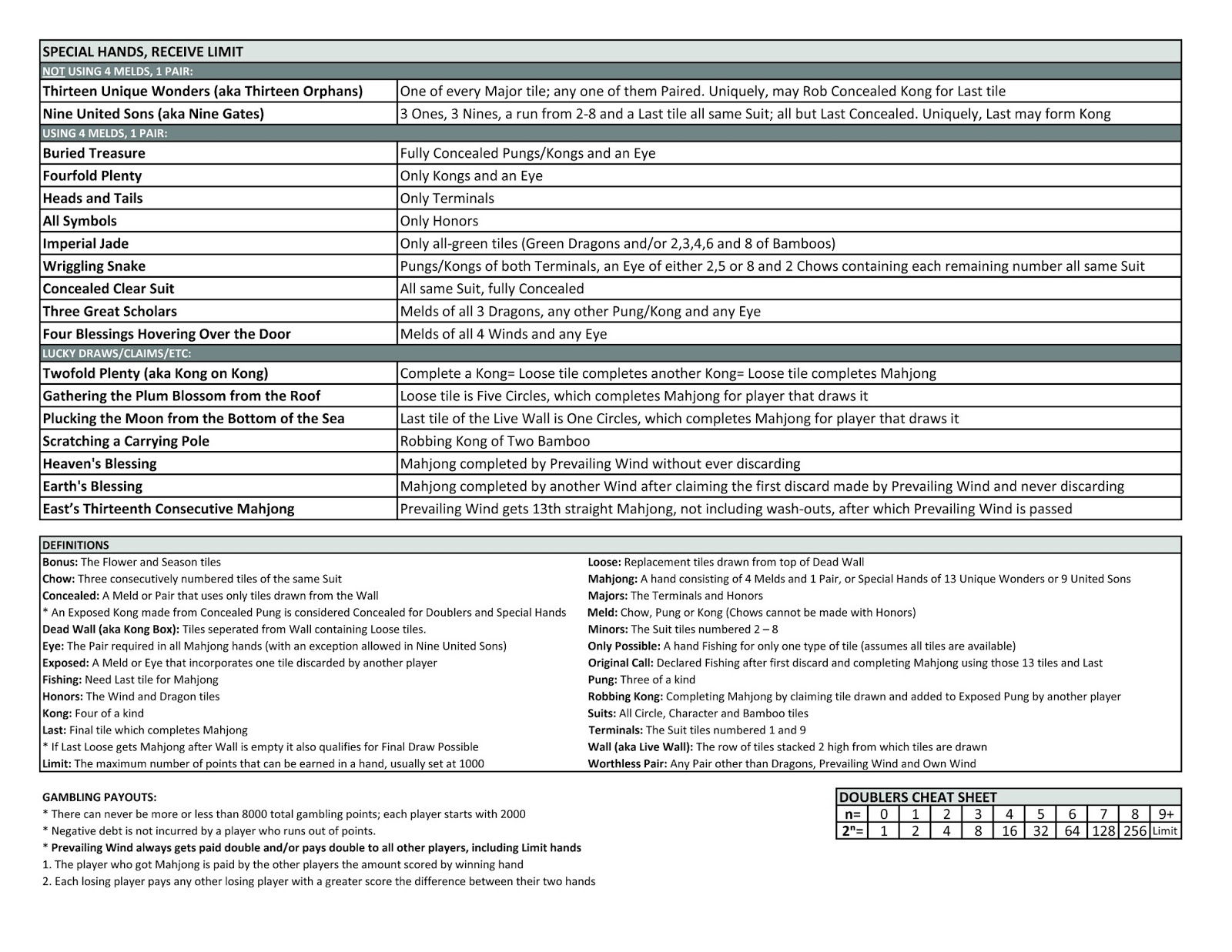
Freedom to Choose: If a set can form both a high-scoring and low-scoring fan, the player has the right to choose which fan will be scored.Non-Identical Principle: If a set is used to create a fan, it cannot be used with other sets to create the same fan.The Non-Separation Principle: After combining sets to arrange a fan, it cannot be re-arranged to create another.The Non-Repeat Principle: When an fan is implied or included by another fan, it is not scored.The player who discarded the winning tile pays the basic points in addition to the extra points. Win by Discard: Each player pays basic points to the winner. Win by Self-drawn: Each player pays the extra and basic points to the winning player. The winner of the hand receives the score from the player who discard the winning tile, plus 8 basic points from each player in the case of self drawn win, he receives the value of this round plus 8 points from all players. To visually show the value of the hand, the winning player uses (from his discards) a single face up tile to represent 1 point and a face down tile to represent 10. The other players need not assist the winner in calculating the value of his hand if it is underscored. The winning player adds up the value of his hand, then the other players may check and verify. If you are playing casually everyone can start arbitrarily with 500 points. Initial PointsĪs these rules are based on tournament play there are no initial starting points. There is less emphasis on Dragon tiles and concealed hands.

A minimum of eight points is needed to call for mahjong.


 0 kommentar(er)
0 kommentar(er)
